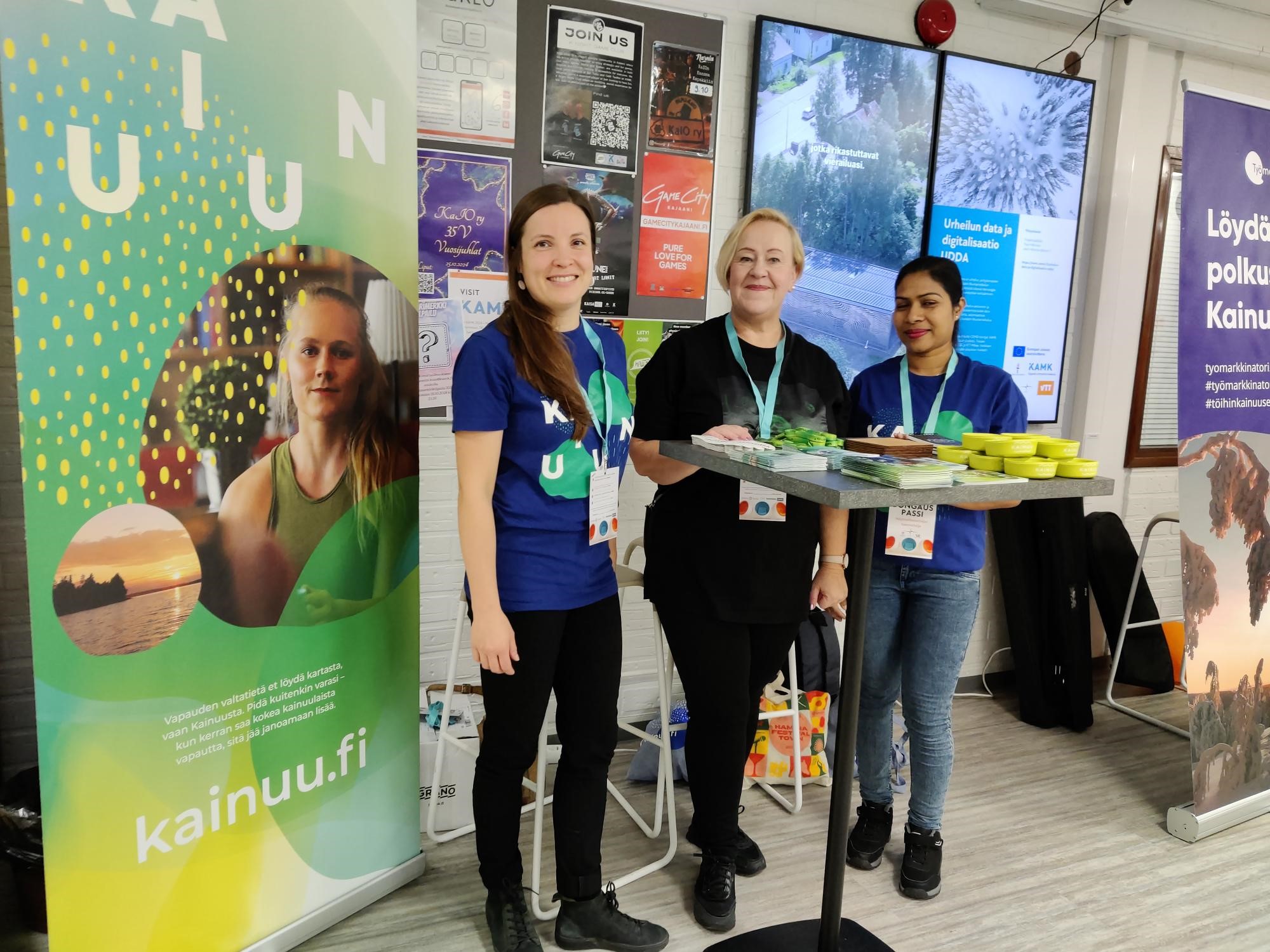Mekin olemme Visit KAMK -tapahtumassa tänään keskiviikkona 23. lokakuuta! Yksi poiminta kiintoisasta ohjelmasta: Klo 14.45 on Tieto 2 (Kampussydämessä) monikulttuurinen esitys “Sri Lankan and Nepalese Cultural Performance”. Mukana myös Kainuun liitossa harjoittelijana toimiva Shanika Kurukulasuriya. Tämän jälkeen on Sointu Borgin inspiroiva esitys oman rohkean urapolun rakentamisesta.
Tässä artikkelissa Shanika kertoo tarkemmin, mistä esityksessä on kysymys ja kuinka sen teema liittyy myös CHERRY-kulttuuriprojektiin (Interreg Europe).
Päivän teemana on Meet! ja tapahtuma onkin loistava verkostoitumiseen, oppimiseen ja viihtymiseen. Tapahtumaan on avoimet ovet, lämpimästi tervetuloa!
The article is in English. Please see in English below, there is a short Finnish introduction.
Artikkeli on englanninkielinen. Alussa on lyhyt johdanto suomeksi.
We are also at the Visit KAMK event today, Wednesday, October 23!
One selection from the interesting program: At 14:45 Tieto 2 (in the Campusheart), at the Kajaani University of Applied Sciences, will have a multicultural show ”Sri Lankan and Nepalese Cultural Performance”. Also included is Shanika Kurukulasuriya, who works as an intern at the Regional Council of Kainuu.
In this article, Shanika explains in more detail what the show is about and how its theme is also related to the CHERRY cultural project (Interreg Europe). The article is in English.
Today’s theme is Meet! and the event is great for networking, learning, and having fun.
The doors at the campus are open, you are warmly welcome!
Prashasthi Traditional Dance in Sri Lanka
The Prashasthi Traditional Dance is a captivating form of Sri Lankan cultural expression that honors the reign of King Narendrasinghe (1707–1739) from the Kingdom of Kandy. Set to the accompaniment of a ”Prashasthi song,” this dance is a tribute to the majesty and grace of the royal court, with dancers embodying the elegance and regal nature of the era.
Prashasthi, or praise dances, are deeply intertwined with Sri Lanka’s cultural heritage and spirituality. These dances serve as acts of devotion, invoking blessings for the community, the king, or divine figures. They reflect the tradition of honoring rulers and celebrating their achievements, and they are often performed during important social, religious, or royal occasions. The choreography of the dance is graceful and majestic, with intricate footwork, fluid arm movements, and expressive gestures that pay tribute to the king’s reign and achievements, preserving the royal heritage and national pride of Sri Lanka.
While Prashasthi dances may not be widely recognized outside traditional contexts, they are integral to religious rituals and ceremonies. They convey symbolic meanings that resonate with Sri Lankan identity, embodying the spiritual connection between dance, devotion, and community. The accompanying music, typically played on traditional instruments like the geta bera (drums) and thammattama (flat drums), adds to the ceremonial feel of the performance, transforming it into a spiritual experience.
The dancers wear vibrant costumes, often featuring golden accents and traditional jewelry, reflecting the grandeur of the royal court. These performances, with their rich cultural significance, offer a glimpse into Sri Lanka’s classical dance heritage while continuing to pre serve and promote the traditions of the past.
In essence, Prashasthi is more than a form of entertainment; it is a celebration of history, tradition, and devotion, representing the unbroken link between Sri Lanka’s ancient past and its enduring cultural identity.
CHERRY project and Prashasthi Traditional Dance share common values
To successfully integrate the CHERRY Project an initiative by the Regional Council of Kainuu promoting culture, creativity, and innovation with Sri Lanka’s Prashasthi Traditional Dance, it is essential to explore their shared values of cultural preservation, community engagement, and regional identity. Both the CHERRY Project and Prashasthi dance emphasize the importance of art in strengthening social connections, celebrating heritage, and fostering creativity. By leveraging the rich cultural history of Prashasthi, the CHERRY Project can deepen its scope through multicultural exchange, innovative artistic collaborations, and the promotion of both regional and national identities.
Integrating Sri Lanka’s Prashasthi Traditional Dance with the CHERRY Project presents a unique opportunity to enrich both initiatives through cultural exchange and collaboration. By drawing on the strengths of Prashasthi its role in preserving heritage, fostering community engagement, and expressing regional identity, the CHERRY Project can broaden its impact, introducing global perspectives while maintaining a focus on local innovation. This fusion of traditional and contemporary artistic practices will not only enhance the cultural landscape of Kainuu but also promote cross-cultural understanding, ultimately fostering a deeper appreciation of both regional and global heritage.
Article: Shanika Kurukulasuriya, intern at the Regional Council of Kainuu.
More information
The Regional Council of Kainuu is a partner in the CHERRY project. More information about the CHERRY project, co-funded by Interreg Europe programme can be found at the Interreg Europe website.
Visit KAMK event on 23.10.2024, more information and programme: https://kamk.fi/tietoa-kamkista/tutustu-kamkiin/visit-kamk/



